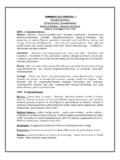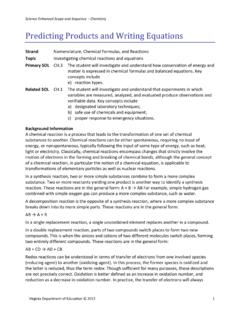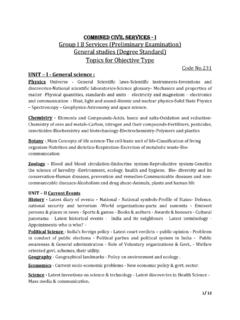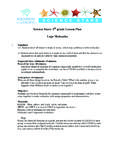Transcription of Estimating the global burden of low back pain …
1 Punnett L et al - Estimating the global burden of low back pain attributable to combined occupational exposures This is a preprint of an article accepted for publication in the American Journal of Industrial Medicine copyright 2005, copyright owner: Wiley-Liss, Inc. Estimating the global burden of low back pain attributable to combined occupational exposures Laura Punnett, ,1 Annette Pr ss-Ust n, ,2 Deborah Imel Nelson, , CIH,2,3 Marilyn A. Fingerhut, ,2,4 James Leigh, , SangWoo Tak, , Sharonne Phillips, BSc, MOHS6 1 Department of Work Environment, University of Massachusetts Lowell, One University Avenue, Lowell, MA 01854, 2 Protection of the Human Environment, World Health Organization, Geneva, Switzerland, 3 School of Civil Engineering and Environmental Science, University of Oklahoma, Norman, OK, , 4 National Institute for occupational Safety and Health, Washington, , , 5 Centre for occupational and Environmental Health, University of Sydney, NSW, Australia, 6 occupational Ergonomics Pty.
2 Ltd., Sydney, Australia Background There is little information about the global burden of non-traumatic low back pain (LBP) attributable to the effects of occupational stressors (physical and psychosocial). Methods Based on a review of the epidemiological evidence, occupation-specific relative risks were used to compute attributable proportions by age, gender, and geographical sub-region for the economically active population aged 15 and older. The referent group was professional/administrative workers; other risk categories were Low=clerical and sales; Moderate=operators (production workers) and service; and High=farmers. Results Worldwide, 37% of LBP was attributed to occupation, with two-fold variation across regions. The attributable proportion was higher for men than women, because of higher participation in the labor force and in occupations with heavy lifting or whole-body vibration. Work-related LBP was estimated to cause 818,000 disability-adjusted life years lost annually.
3 Conclusions occupational exposures to ergonomic stressors represent a substantial source of preventable back pain . Specific research on children is needed to quantify the global burden of disease due to child labour. Key Words: back pain ; ergonomics; global burden of disease; human factors; musculoskeletal disorders; psychosocial; risk assessment; risk factors; work-related disease INTRODUCTION pain in the soft tissues of the back is extremely common among adults. In the United States, the National Arthritis Data Workgroup reviewed national survey data showing that each year some 15% of adults report frequent back pain or pain lasting more than two weeks [Lawrence et al., 1998]. Back pain is widespread in many countries, and is associated with substantial financial costs and loss of quality of life. In Canada, Finland and the United States, more people are disabled from working as a result of musculoskeletal disorders (MSDs) - especially back pain - than from any other group of diseases [Badley et al.]
4 , 1994; Batti and Videman, 1997; Bernard, 1997; Riihim ki, 1995]. MSDs constitute a major proportion of all registered and/or compensable work-related diseases in many countries, representing a third or more of all registered occupational diseases in North America, the Nordic countries and Japan. The physical ergonomic features of work that are most frequently cited as MSD risk factors include rapid work pace and repetitive motion patterns; insufficient recovery time; heavy lifting and other forceful manual exertions; non-neutral body postures (either dynamic or static); mechanical pressure concentrations; vibration (both segmental and whole-body); and low temperature. Many reviewers from the United States, Canada, Europe, and Asia have reached similar conclusions regarding the etiologic importance of these exposures for low back disorders [Bernard, 1997; Riihim ki, 1995; Burdorf and Sorock, 1997; Frank et al., 1996; Garg, 1992; Gordon and Weinstein, 1998; Hagberg et al.
5 , 1993; Hagberg et al., 1995; Hales and Bernard, 1996; Hoogendorn et al., 1999; Hulshof and Veldhuijzen van Zanten, 1987; ICOH et al., 1996; Jensen, 1988; Jin et al., 2000; Johanning et al., 1991; Lagerstr m et al., 1998; Nachemson, 1999; National Research Council, 2001; Riihim ki, 1991; Viikari-Juntura, 1997; Wikstr m et al., 1994]. Psychosocial factors may also play a role, although the evidence for these is less conclusive to date. Despite this extensive literature, some still dispute the evidence for physical workload, especially in relation to non- occupational causes [ , Nachemson, 1999; Batti and Bigos, 1991; Waddell, 1991]. Reasons for the continuing controversy have been discussed elsewhere [Frank et al., 1996; National Research Council, 2001; Frank et al., 1995; Punnett and Wegman, 2004; Viikari-Juntura and Riihim ki, 1999]. Address correspondence to: Laura Punnett, Department of Work Environment, University of Massachusetts Lowell, One University Avenue, Lowell, MA 01854, , Tel: +1-978-934-3269; Fax: +1-978-452-5711; E-mail: 1 Punnett L et al - Estimating the global burden of low back pain attributable to combined occupational exposures This is a preprint of an article accepted for publication in the American Journal of Industrial Medicine copyright 2005, copyright owner: Wiley-Liss, Inc.
6 Low back pain was identified by the Pan American Health Organization as one of the top three occupational health problems to be targeted by surveillance within the WHO Region of the Americas [Choi et al., 2001]. To prioritize prevention efforts appropriately world-wide, information on the burden caused by occupational exposure to physical and psychosocial stressors would be useful. Guo et al. [Guo et al., 1995] estimated that 65% of low back pain cases in the United States are attributable to the combined effects of the occupational exposures listed above. To date, no other estimates of the fraction of back pain in the total population that is occupationally induced have been identified. Thus, the analyses described here sought to quantify the global burden of work-related low back disorders. Two companion papers in this issue address the costs and benefits of interventions to reduce ergonomic stressors at work [Lahiri et al., 2005a; Lahiri et al.]
7 2005b]. MATERIALS AND METHODS Basic Methodology and Population This comparative risk assessment (CRA) exposure assessment was conducted using the overall methodology developed Estimating the global burden of occupational disease and injury [Concha-Barrientos et al., 2005 (forthcoming); Nelson et al., 2005 (forthcoming)]. The age- and gender-specific distribution of the workforce aged 15 or older in each occupational group, as compiled by the International Labour Organization and the World Bank, was categorized by sub-region and adjusted by the economic activity rate (EAR) to generate the denominator for these analyses [see Nelson et al., 2005 (forthcoming)]. In the absence of data on world-wide prevalences of all relevant physical and psycho-social exposures, we used broad occupational category as a proxy for exposure to the combined stressors that produce excess risk of low back pain . Estimates of relative risk by age, sex, region, and exposure category were applied to compute stratum-specific attributable proportions; multiplying these by persons at risk gave numbers of cases, which could then be summed across strata for estimation of the global attributable proportion.
8 The same fractions for each age-sex-region stratum were applied to the total of disability-adjusted life years (DALYs) caused by low back pain . Definition of Outcome Low back pain (LBP) was defined as any non-traumatic musculoskeletal disorder affecting the low back. It included all back pain , regardless of diagnosis, that was not secondary to another disease or injury cause ( , cancer or motor vehicle accident). It included lumbar disk problems (displacement, rupture) and sciatica but excluded cervical spine problems, such as neck pain or neck torsion problems. exposure Categories Reviews of low back pain epidemiology have implicated an overlapping set of occupational exposures such as lifting, forceful movements, awkward postures, whole-body vibration and perhaps psychosocial stressors. However, such exposures are rarely assessed in surveillance activities on a large scale, and thus data are not available for risk assessment calculations at the global level.
9 An alternative strategy was applied for this assessment, using occupation as a proxy for specific combinations of physical and psychosocial stressors. The reference group (background risk) comprised professional and administrative workers. The other risk categories were defined as follows: Low exposure : Clerical and sales workers Moderate exposure : Operators (production workers) and service workers High exposure : Farmers This method thus required the assumption that the distribution of the combined individual risk factors (psychosocial as well as physical exposures) is similar within each occupational group across geographical regions. It also assumed that the relative risks among occupational groups were stable across studies, although this assumption could be examined directly in available published reports (see below). For low back pain , theoretical minimum risk was considered to represent the level of disease that would occur in the population if all excessive physical workload were abated by effective implementation of ergonomic control measures.
10 This would be equivalent to the achievement of relative risks of in each occupational group. Relative Risk of LBP by exposure Category: Data sources Electronic literature searches were conducted in MEDLINE and the WHO Regional libraries, and published statistics of national occupational health and safety institutes were consulted. Epidemiologic studies published between 1985 and 2001 were sought that compared the risk of low back pain among the occupational groups specified above (by odds ratio, prevalence ratio, or incidence ratio) and comprehensively enough to cover the range of occupations within each group. Smaller, more specific studies limited to relatively narrow occupational groups ( , nurses, dockers, drivers) were checked for consistency with the more comprehensive data sets. Studies where the reference groups were engaged in substantial physical activity ( , house painters) were excluded. In addition, reviews and studies were identified that might provide evidence to support or contest the selected approach.

















